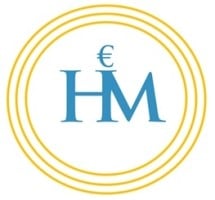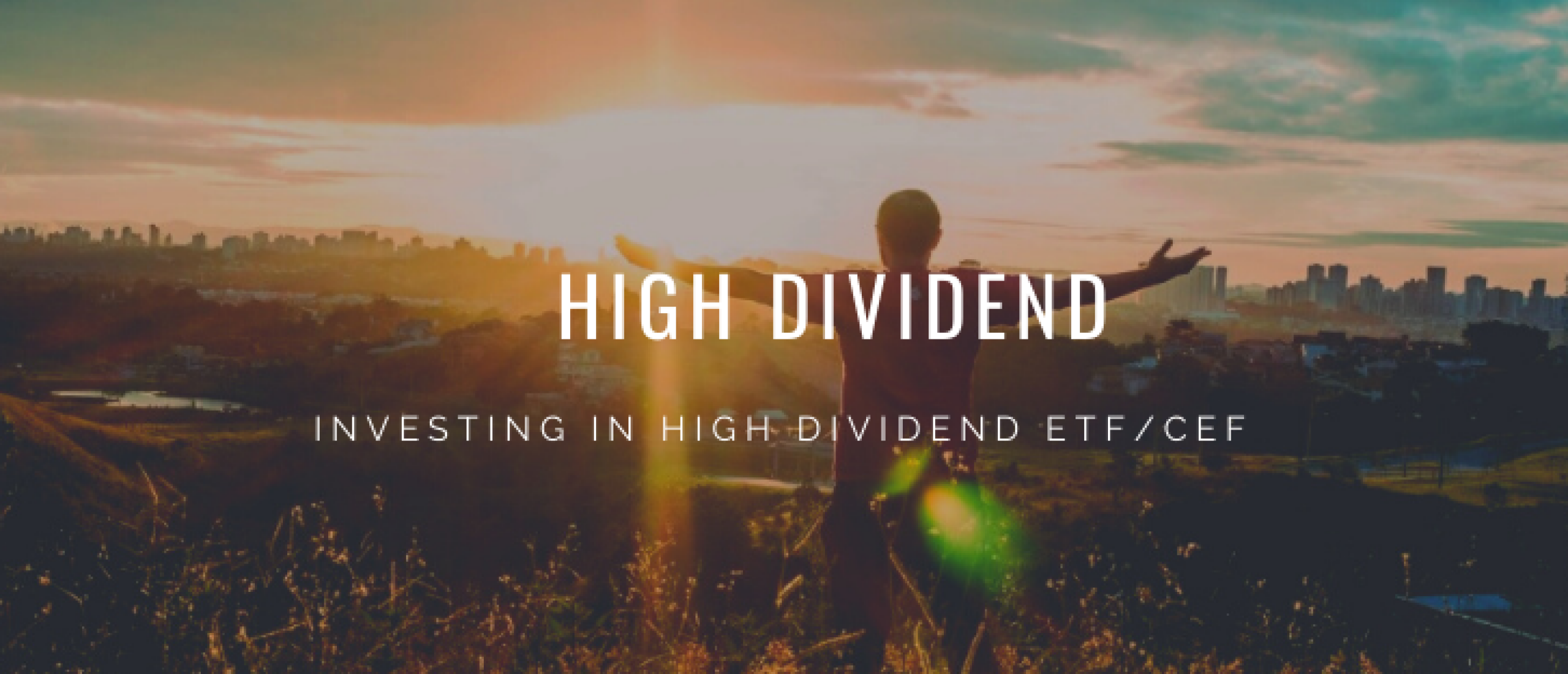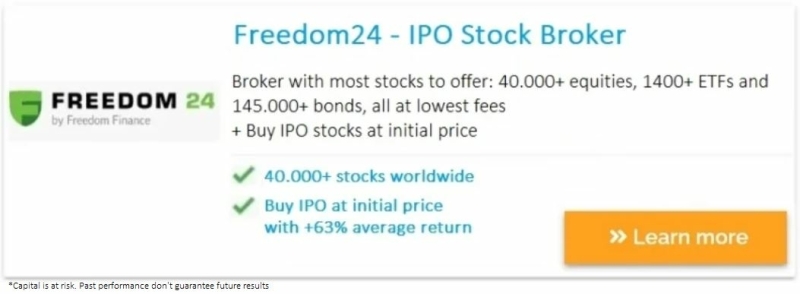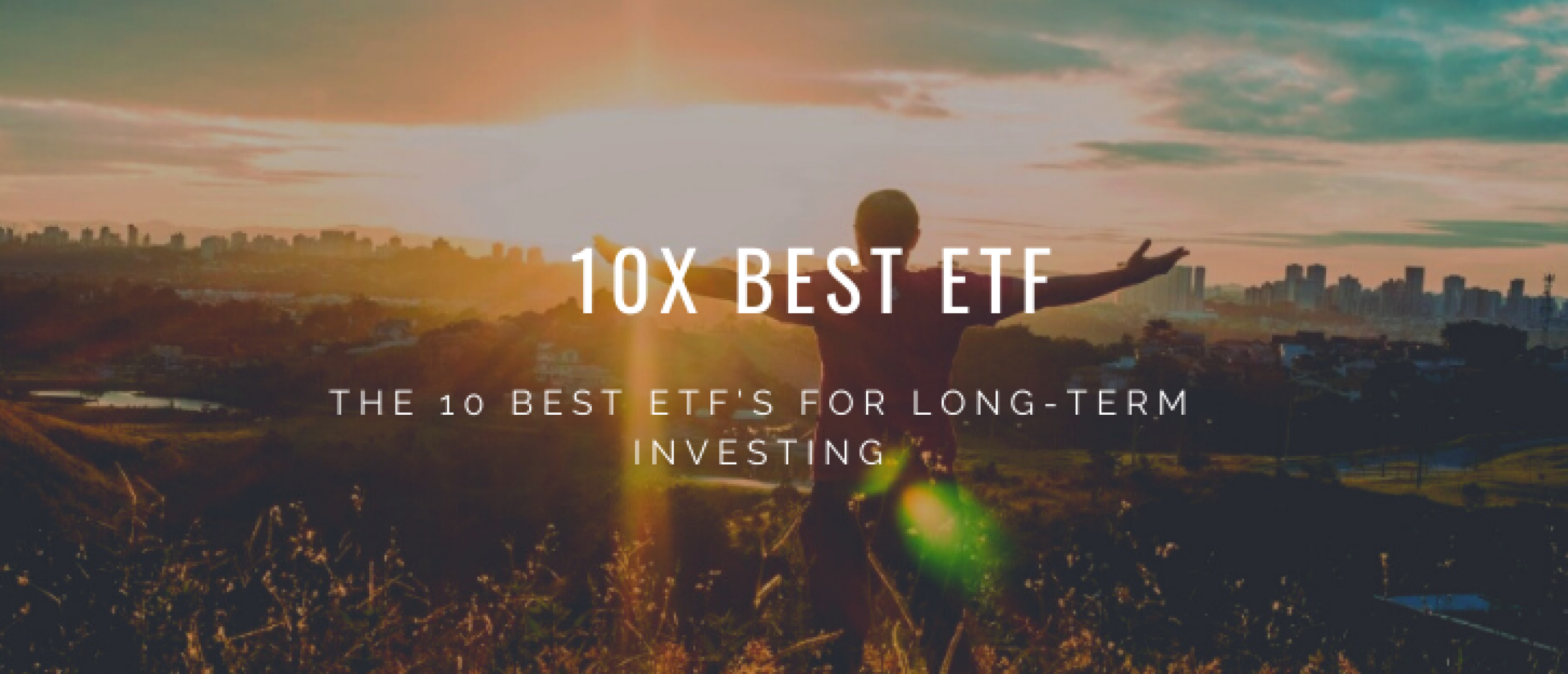Dear Happy Investor, Investing in high dividend ETF and CEF has advantages and disadvantages. The investment potentially yields high dividends. Yet there are significant risks that can lead to nasty surprises, such as 50% price loss. In this article we will discuss the basics to high dividend ETFs and high dividend CEFs. After this article, you will know the differences between the ETF vs. CEF, and know examples of high dividend ETFs/CEFs.
High Dividend ETF

A high dividend ETF refers to a mutual fund that focuses on high dividend stocks. A characteristic of ETF is that it purely follows the price movement, without active management. This makes the fund cheap. Sometimes even as little as 0.10% per year. This is much cheaper than investing in stocks, where you lose at least 0.5% - 1.5% per year.
Another advantage to high dividend ETF is its diversification. Advanced investors like to invest in dividend stocks. This is because they pay dividends frequently. This increases the certainty of income. But it also has drawbacks, such as slower business growth and potentially large losses when the wrong purchases are made. With high dividend ETFs, you don't have to worry about individual company performance. With an ETF, you buy a bundle. This can be 50, but also 1000. The latter gives so much spread that individual risk is minimal.
Of course, a high dividend ETF also has disadvantages. More spread leads to lower risk, but also to lower returns. Advanced investors can achieve much higher returns, as with the best stocks.
It is important to understand that a high dividend ETF is not without risk. Typically, a dividend fund pays about 2 - 6% dividends per year. But in the event of an economic contraction, the dividend will be lower and the stock price may fall as low as 30 - 70%. There are also bad ETFs out there. Avoid bad choices.
Examples of High Dividend ETFs
There are plenty of examples of high dividend ETFs. You can find them yourself by simply searching for them. Here are a few examples:
- Schwab U.S. Dividend Equity ETF ±3% dividend
- iShares Emerging Markets Dividend ETF ±6.5% dividend
- SPDR Portfolio S&P 500 High Dividend ETF ±4.5% dividend
- iShares Euro Dividend ETF ±4.5% dividend
- Invesco Global Listed Private Equity ETF ±7.5% dividend
High dividend ETFs typically pay between 3 - 7% dividends. A higher dividend is not always better. This depends on what kind of investor you are. Basically, the shorter the duration, or the higher the need for dividend income, the more logical it is to opt for higher dividends.
You can recognize the best high dividend ETFs by several factors. These include the degree of risk spread, availability with investment platforms, level of dividend, frequency of payment, liquidity, et cetera.
Finally, it is good to know that high dividend ETFs mainly follow companies. In addition to companies, you also have the choice of real estate companies/funds. This can be in the form of REITs or REIT ETFs. Both can pay high dividends starting at 5% per year. Of course, this branch has other advantages and disadvantages.
Finally, it is good to know that high dividend ETFs do not offer the highest total return. Total return consists of price return + dividend. View a list of the best eToro ETFs on potential total return here. Also, check our ETF's for young investing.
High Dividend CEF

In addition to high dividend ETFs, high dividend CEFs also exist. CEF stands for Closed-End Fund. It is a mutual fund with a fixed number of issued shares. No new shares are issued, making it "closed". As individuals, we can buy and sell CEFs on existing exchanges.
CEFs sometimes work with leverage (levers). High dividend CEFs employ a strategy of keeping the dividend as high as possible. The downside to this is that CEFs may contain more risk than you might think. The fastest way to lose money is with leverage. Therefore, analyze the investment strategy very extensively before you buy.
CEF as a Closed-End Fund does have some advantages over an Open-End Fund (such as an ETF). For example, you can buy CEF at a discount to its Net Asset Value (NAV). They also require large cash reserves, as CEF shares are not exchangeable just like open-end funds. One disadvantage of this is lower liquidity.
The fact that CEFs are often leveraged means that they often pay high dividends. High Dividend CEFs employ an active investment strategy to generate fixed income for its shareholders. This advantage comes at the price that CEFs often charge high management fees. Think 1% to 2.5% per year. In addition, active mutual funds often perform worse than the market average (either after fees).
CEF vs. ETF differences
There are two major differences between a CEF vs. ETF. The first is that a CEF is under active management. Contemporary ETFs are also emerging with active management, but fundamentally it is passive management. That is the strength of ETFs: passively following the market. With CEF, the management tries to achieve a higher return than the market by means of an active buying and selling policy. In exchange for this effort, they charge higher management fees vs. an ETF. Ironic, because past experience shows that few active funds actually realize higher returns.
Another notable difference between CEF vs. ETF is that a CEF can be bought below or above NAV. Ideally, you should buy a CEF at a discount to its NAV.
Examples of High Dividend CEFs
There are hundreds of examples of high dividend CEFs. This article does not contain extensive research on the best CEFs. Below you will find CEF examples for inspiration. It is very important that you do proper research before investing in high dividend CEFs. Pay particular attention to the downside risk associated with leverage.
Examples of high dividend CEFs:
- PIMCO Corporate & Income Opportunity Fund ±9.5% dividend
- PIMCO Income Strategy Fund ±10% dividend
- Flaherty&Crumrine Preferred Income Fund ±8% dividend
- Calamos Dynamic Convertible & Income Fund ±9% dividend
- BlackRock Science and Trust Technology ±7% dividend
There are many different types of high dividend CEFs. Calamos' fund focuses on >50% convertibles. BlackRock's fund (BST) focuses purely on technology stocks. While, for example, PIMCO's fund focuses on multi-sectors.
The high dividend CEF called PIMCO Corporate & Income Opportunity Fund offers a high annual dividend. The total fee is only 1.09%. Since 2002, the CEF has offered relatively high dividends. It has very active management that consistently invests in different sectors to capture the momentum of value stocks. The diversification is relatively good, but don't overlook the high risks. This CEF has frequently declined in value by 40% to even 65%. The entry point is therefore important.
We do not indicate that the above high dividend CEFs are a good investment. As indicated, it has specific advantages and disadvantages. Do thorough research before investing, and always opt for diversification.
5 Alternatives to High Dividend ETFs and CEFs
High dividend CEFs are particularly suitable for the more passive investor seeking high dividends. However, because of its leverage, a CEF can also fall sharply in price. At such times, great opportunities arise, although a CEF can also continue to fall dramatically to substantial losses. A high dividend ETF is much cheaper than a CEF. The dividend is usually lower, though. On the other hand, volatility is lower because leverage is not used. In addition, liquidity is higher because you can trade ETFs quickly. With a CEF, the shares have to be taken over by another investor. Sometimes this leads to low liquidity.
However, there are alternatives to high dividend ETFs and CEFs.
These alternatives can lead to (1) higher dividends or (2) higher total returns:
1. High dividend stocks
2. Real estate
3. Real estate funds
4. P2P Lending
5. Crypto Staking
In our investing blogs, you will find research and insights with more information on the above investment opportunities.





![Best Energy ETF: 7 Energy Investment Funds [2022]](https://media-01.imu.nl/storage/thehappyinvestors.com/4861/best-energy-etf-2560x1100.png)

![8x Best ETFs eToro to Buy [2022] Higher Yield, Lower Risk](https://media-01.imu.nl/storage/thehappyinvestors.com/4861/best-etf-etoro-2560x1100.png)

